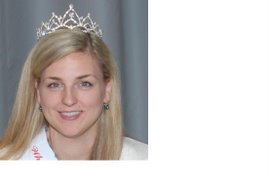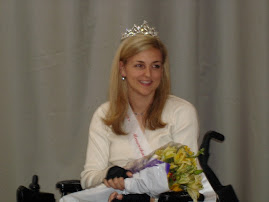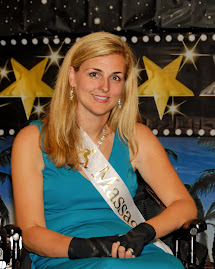Scientists have created the equivalent of embryonic stem cells from ordinary skin cells, a breakthrough that could someday produce new treatments for disease such as Spinal Cord Injuries and Parkinson's Disease without the explosive moral questions of embyro cloning.
Research teams in the United States and Japan showed that a simple lab technique can rival the complex and highly controversial idea of extracting stem cells from cloned embryos. It was a landmark achievement on all fronts, defusing one of the most divisive debates in modern medicine and religion. It was lauded by scientists, ethicists and religious groups.
"This work represents a tremendous scientific milestone — the biological equivalent of the Wright Brothers' first airplane," said Dr. Robert Lanza, whose company, Advanced Cell Technology, has been trying to extract stem cells from cloned human embryos. "It redefines the ethical terrain," said Laurie Zoloth, a bioethicist at Northwestern University.
"It's a win-win for everyone involved," said the Rev. Thomas Berg of the Westchester Institute, a Roman Catholic think tank. "We have a way to move forward which ... brings the kind of painful national debate over this controversial research to very much a peaceful and promising resolution."
The new technique reprograms cells, giving them the chameleon-like qualities of embryonic stem cells, which can morph into all kinds of tissue, such as heart, nerve and brain. As with embryonic cells, the hope is to speed medical research. For example, one day an ailing patient might benefit from genetically matched healthy tissue that would replace damaged cells.
The scientists themselves were startled by their success. "I was surprised when we achieved our results with the mouse," Yamanaka said. "But proving what we could do with human cells really bowled me over."
Thomson said he was surprised it didn't take longer to discover how to reprogram ordinary cells. The technique, he said, is so simple that "thousands of labs in the United States can do this, basically tomorrow." In contrast, the cloning approach is so complex and expensive that many scientists say it couldn't be used routinely to supply stem cells for therapy.
The new work shows that like cloning, "direct reprogramming" can also use ordinary body cells to create versatile cells that are genetically matched. "It's a bit like learning how to turn lead into gold," said Lanza, while cautioning that the work is far from providing medical payoffs.
"It's a huge deal," agreed Rudolf Jaenisch, a prominent stem cell scientist at the Whitehead Institute in Cambridge, Mass. "You have the proof of principle that you can do it."
Still, scientific questions remain about the cells produced by direct reprogramming, called "iPS" cells. One is how the cells compare to embryonic stem cells in their behavior and potential. Eventually, iPS cells might prove better for some scientific uses and cloned stem cells preferable for other uses. For example, scientists want to study the roots of genetic disease and screen potential drug treatments in their laboratories.
Scottish researcher Ian Wilmut, famous for his role in cloning Dolly the sheep a decade ago, has said he is giving up the cloning approach to produce stem cells and plans to pursue direct
reprogramming instead. "We'll see, ultimately, which one works and which one is more practical," he said.
skip to main |
skip to sidebar

Ms. Wheelchair Massachusetts 2007, 2nd Runner Up Ms. Wheelchair America 2008

Ms. Wheelchair Massachusetts 2007, Crowning Ceremony

Ms. Wheelchair America 2008, Crowning Ceremony, Placed Second Runner Up

UPDATED DAILY!!!
Kristen McCosh

Ms. Wheelchair Massachusetts 2007, 2nd Runner Up Ms. Wheelchair America 2008
Official Bio for Press Releases
- Kristen McCosh, "Leading By Example"
- Boston, MA, United States
- Kristen was chosen as Ms. Wheelchair Massachusetts 2007. A gifted speaker and writer, she is currently finishing a Women's Fiction novel series featuring women with disabilities as heroines. She graduated Magna Cum Laude with a BA in English and Political Science from the University of Massachusetts at Boston, and has studied toward her MPH at Boston University School of Public Health. Kristen is employed as the Editor In Chief of "Solutions" e-magazine, published by Hire Disability Solutions, LLC - www.hireds.com. She also works as an Early Intervention Program Consultant with newly-injured SCI patients at Spaulding Rehab Hospital. Kristen sustained a C6 spinal cord injury (SCI) in a diving accident at the age of 15. She lives in Boston and Falmouth, Cape Cod, with her husband.
Official Quote for Press Releases
"We are the first generation of Americans with disabilities to be recognized as having equal civil rights under the law, and because of this we bear a responsibility; that is, not only to break down barriers for others, but also to lead by example."
Official Contact Information
Kristen is available for events, interviews, and appearances. She always welcomes greetings from her readers. Feel free to contact her. Her contact Email Address is: mswheelchairmass07@yahoo.com. Her Mailing Address is: Kristen McCosh, PO Box E28, South Boston, MA 02127. Her Cell Phone Is: 617-312-5804. Her Website is: http://www.mswheelchairmass.org/.
Official MWMA Photo for PR

Ms. Wheelchair Massachusetts 2007, Crowning Ceremony
The Ms. Wheelchair Massachusetts Organization
This 501 (c) (3) non-profit organization seeks to give women with disabilities a forum to promote their achievements as well as an opportunity to voice the needs of those with mobility impairments. It is in no way a beauty contest; rather, it is an annual competion to select the most accomplished and articulate spokesperson for people with disabilities in the Commonwealth. By her example, the winner will showcase the talents, abilities and value of disabled women. She will work to inspire others with disabilities while advocating on their behalf to the business, political, and non-disabled community.
Show your Support - Donate to the Ms. Wheelchair Massachuetts Organization
In order to ensure successful continuation of the program, the Ms. Wheelchair Massachusetts Organization needs your financial support. We are actively seeking corporate sponsors, as well as donations from individuals and groups. Contributions are tax-deductible, and will be used to establish a successful state program that will lead to strong representation each year in the national competition. All donations can be made out and mailed to Ms. Wheelchair Massachusetts at the address above. Every sponsor and donor will be highlighted on my blog. Thank you in advance...
Photography Fundraising Update
Kristen's husband is donating sales from his photography business to support the Ms Wheelchair Massachusetts program. Please visit his website to browse and purchase photos: http://www.johnmccoshphotography.com/
Total Funds Raised To-Date: $135
Total Funds Raised To-Date: $135
Official MWA Photo for PR

Ms. Wheelchair America 2008, Crowning Ceremony, Placed Second Runner Up
Sponsors for the 2008 Ms. Wheelchair America Pageant
- * * * * * * * * * * * * * * * * * * * * * * * *
- Aunt Joan
- NEMED
- George & Margaret McCosh
- Ann Magner
- Families of Special Olympians
- Allcare Medical Supply
- Anonymous Friend
My Email Buddies
- EMAIL ME TODAY AND GET YOUR NAME PLACED HERE ON MY BUDDY LIST!!! mswheelchairmass07@yahoo.com
- * * * * * * * * * * * * * * * * * * * * * * * * * * * *
- Lorraine C
- Tracey K
- Jim
- Buddy
- Janet
- Sarah Mac
- DD
- Sigrid
- John
- LU
- Cookie
- Sebouh
Labels
- Access (2)
- Advocacy (47)
- Consumer Education (16)
- E-Magazines (1)
- Employment (6)
- Events Attended (15)
- Fundraiser (5)
- FYI (32)
- Health Insurance (1)
- Inspirational Thoughts (23)
- Legislation (7)
- Ms Wheelchair America (26)
- Official Appearances (25)
- Opinions (7)
- Organizations (63)
- Physical Fitness (22)
- Press Release (21)
- Profiles (25)
- Rehabilitation (1)
- Research (6)
- Solutions Magazine (2)
- Spinal Cord Injury (40)
- Sponsors (9)
- Support (2)
- Transportation (1)
- Universal Design (2)
- Upcoming Appearances (25)
- Upcoming Event (37)
- Veterans (2)
- Volunteer Opportunity (2)
- Women's Disability Issues (2)
- Writing (6)
My Year As Ms Wheelchair Massachusetts 2007 In Pictures
Check Out My Webcasts at EndeavorFreedom.tv
Check Out My Calendar of Upcoming Events!
Check Out Some Of My Favorite Links!
- The Miami Project
- Care Cure Community
- Endeavor Freedom TV
- Ms Wheelchair America
- Hire Disability Solutions
- National Council On Disability
- New Mobility Magazine
- John McCosh Photography
- Ms Wheelchair Massachusetts
- Boston Center for Independent Living
- Christopher and Dana Reeve Foundation
- National Spinal Cord Injury Association
- Christopher Reeve Paralysis Resource Center
- Greater Boston Chapter of National SCI Association
- American Association for People with Disabilities
- Boston Medical Center - Stepping Forward, Staying Informed
